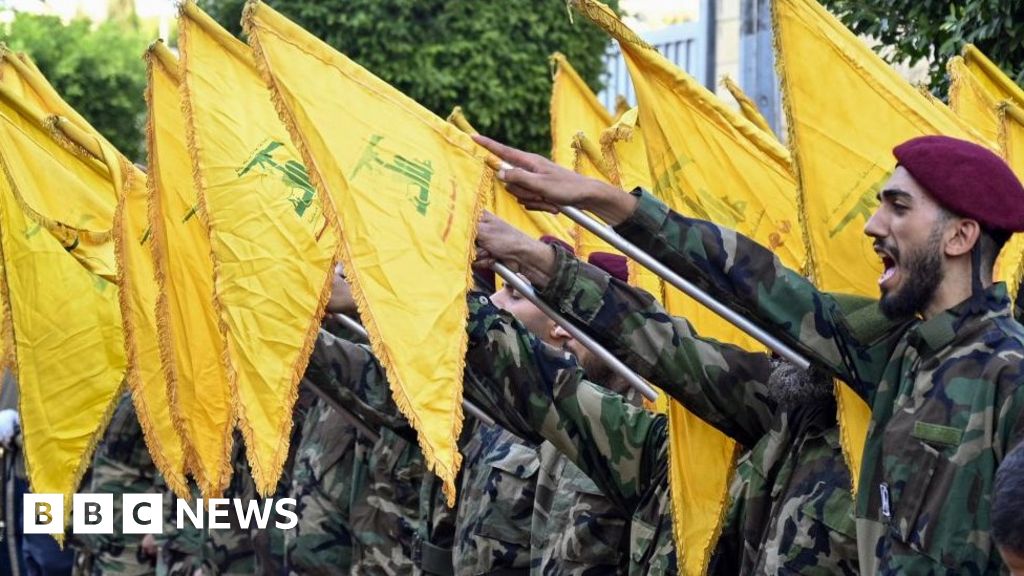Previously sporadic fighting escalated on 8 October 2023 – the day after the unprecedented attack on Israel by Hamas gunmen that triggered the war in Gaza.
Hezbollah fired at Israeli positions, in solidarity with the Palestinians.
The group has since launched more than 8,000 rockets at northern Israel and the Israeli-occupied Golan Heights. It has also fired anti-tank missiles at armoured vehicles and attacked military targets with explosive drones.
The Israel Defense Forces (IDF) has retaliated with air strikes and tank and artillery fire against Hezbollah positions in Lebanon.
More than 70,000 people have been displaced by the fighting in northern Israel, while more than 110,000 have been displaced on the Lebanese side of the border.
Tensions soared after the killing of 12 children and young people in a rocket attack in the Golan Heights on 27 July. Israel said Hezbollah carried out the attack, but the group denied involvement.
On 30 July, the IDF announced that it had killed senior Hezbollah military commander Fuad Shukr in an air strike in Beirut’s southern suburbs.
The following day, Hamas political leader Ismail Haniyeh was killed in Iran’s capital, Tehran. Israel neither confirmed nor denied any involvement.
On 25 August, the IDF said its jets had pre-emptively struck thousands of Hezbollah rocket launchers, after identifying that the group was preparing an attack in retaliation for the killing of Fuad Shukr.
Hezbollah said it still managed to launch hundreds of rockets and drones at Israel. However, it did not target major cities in Israel and did not deploy its more sophisticated weapons.
There was another significant escalation on 17 and 18 September, when 39 people were killed and thousands wounded after pagers and walkie-talkies used by members of Hezbollah exploded.
Hassan Nasrallah blamed Israel for the attacks and said they had “crossed all red lines”. Israel neither confirmed nor denied being behind the blasts.
Hezbollah suffered another setback on 20 September, when at least 16 members, including top military commanders Ibrahim Aqil and Ahmed Wahbi, were killed in an Israeli air strike in Beirut’s southern suburbs. Those killed also included children and other civilians.
Two days later, the group sought revenge for Aqil’s death by firing longer-range weapons deep inside Israel, sending thousands of Israelis to bomb shelters and damaging homes near the city of Haifa.
Lebanon’s health ministry said at least 613 people had been killed as of 20 September – before the IDF carried out hundreds of air strikes as part of a new “offensive operation”. Most of those killed since October were believed to be Hezbollah fighters, but at least 147 were civilians, according to the ministry.
In Israel, authorities say at least 49 people have been killed as a direct result of attacks.
Israel and Hezbollah have continued to trade strikes across the border in recent days, with Israel stepping up its attacks. Israeli Prime Minister Benjamin Netanyahu has said Israel’s goal was to “defeat Hezbollah” and return 70,000 displaced Israelis to their homes in the north.
Air strikes on Beirut on 27 September that killed Nasrallah also killed at least six people and injured 91.
Officials say nearly 800 have been killed and around 90,000 displaced since 23 September.

